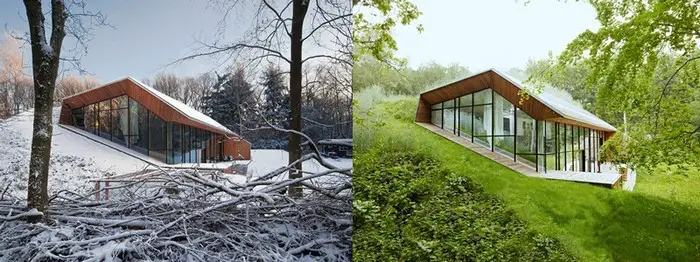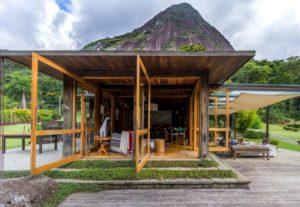Netherlands – Denieuwegeneratie
Year built: 2011
Photography: Jaap Vliegenthart, John Lewis Marshall
In winter, when the sun is lower, the large glass facade allows the sun in to warm the concrete shell. The thermal mass holds the warmth releasing it slowly during the night. In summer, when the sun is higher relative to the horizon, the same mass keeps the house cool. The wooden cantilever regulates sun and is the only visible architecture in the landscape. The open structure of the house is filled in with a light set of rooms, giving it a flexibility to grow together with its owners.
A fully sustainable design, all water is recycled to the gardens and the home generates more power than it uses.
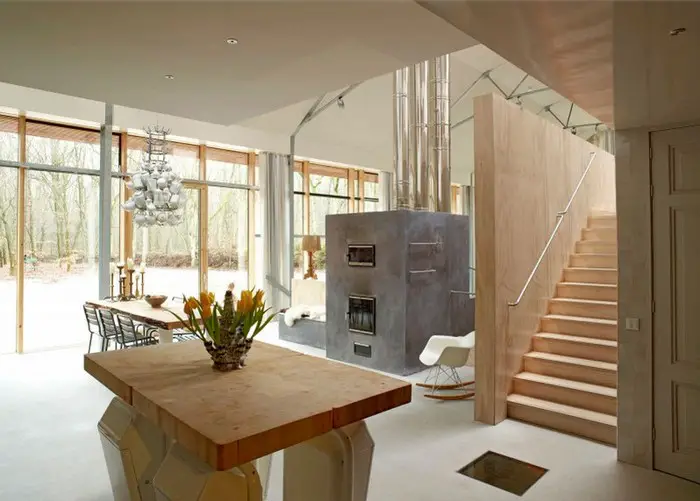
From the architect:
To minimize disturbance of the landscape and as a reference to the surrounding hilly terrain, the house is embedded in an artificial hill. At the same time, this answered the client’s demand for keeping his ecological footprint with the house to a minimum. The embedding in the hill simultaneously functions as camouflage and as a blanket, hiding the house from view from the north side and using the earth as thermal insulation. One enters the house through cuts in the mountain, sided with panels of slowly corroding scrap steel.
On the south side, the house has been opened to a maximum. The grand glass facade is framed in timber, which guides the transition from the artificial to the natural. The canopy regulates sunshine through the seasons and allows for a large terrace along the full width of the house. The terrace follows the split level of the ground floor, jumps up to the higher west façade creating a henhouse underneath. Finally, it curls back up to become the canopy. The frame is constructed out of lark wood, forested from the immediate surroundings and therefore making it a hyperlocal use of material. Detailing creates a seamless transition between the interior and the exterior: the concrete floor, window frames and terrace finishing are all flush and continuous from inside to outside.
The spatial structure of the house is a rectangular 12 x 19 meter open space. Steel beams cross the entire 12 meter width allowing great flexibility to the interior arrangement. Inside the hall-like space, the rooms are stacked in a disorderly manner and built out of light wooden structures, facilitating easy implementation of possible future changes. The interior can evolve along with its inhabitants, a young family, rooms being added or removed through time.
There is a binary spatial experience in the house. Either you are in a room, with a cave-like atmosphere, daylight coming to you through deep cuts in the mountain – or you are in the large open space in front of the stacked rooms. This large space is oriented towards the 90 m2 glass facade which offers a spectacular view of the surrounding woods.
The contrast between shell and rooms is clearly visible. The concrete wall, needed to retain the mass of the mountain, is left unfinished. The welding joints of the steel spans are visible and the wood is untreated. Within this rough shell of untreated construction materials, the stack of rooms tells a completely different story: every room is finished by the inhabitants in a unique and colorful way, which expresses the individuality of the boxes.
The design is an experiment in sustainable strategies in both architecture – the hardware – and the technical installations – the software – which have been designed by Arup Amsterdam. The software concept consists of photovoltaics, LED lighting, wood pellet heating in combination with low temperature heating, CO2 monitored ventilation, a grey water circuit and the use of smart domotics. The result is a house in which the total amount of energy produced exceeds its consumption: excess energy can be used for an electric car.
The house is bold and unpredictable: an experiment in sustainable strategies in concept, structure, material and technical installations. A house that blends quietly in its surroundings, but stands out with spatial surprises.
Click on any image to start lightbox display. Use your Esc key to close the lightbox. ![]()
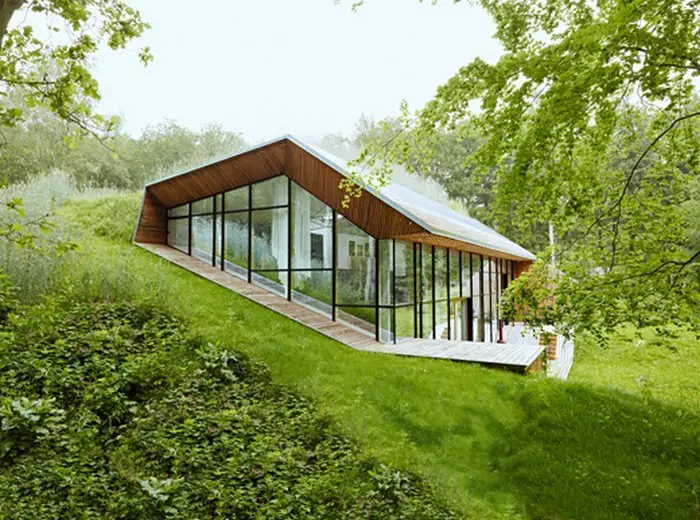


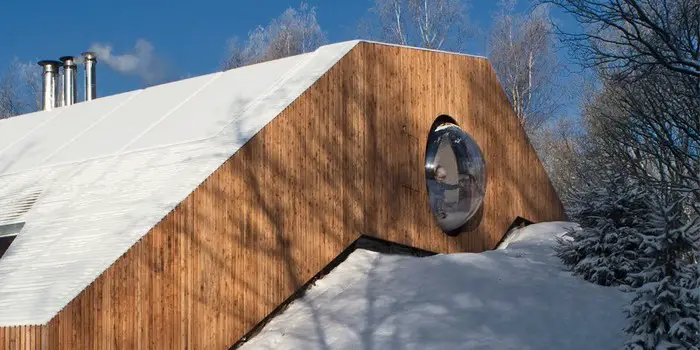
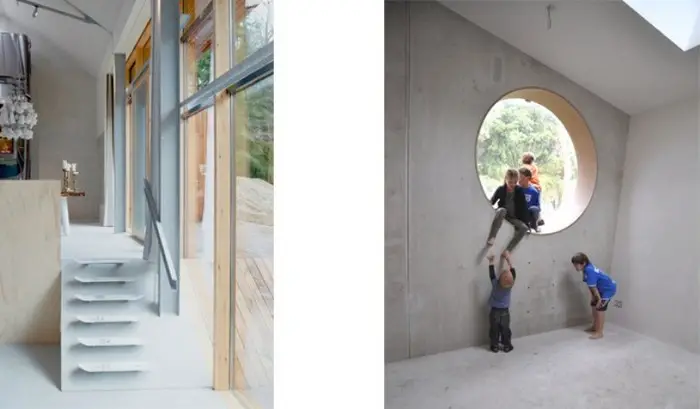
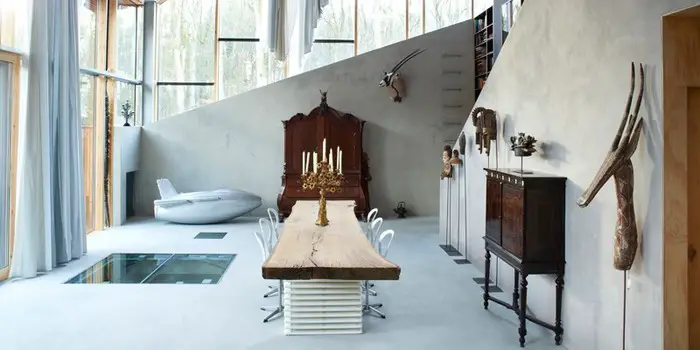





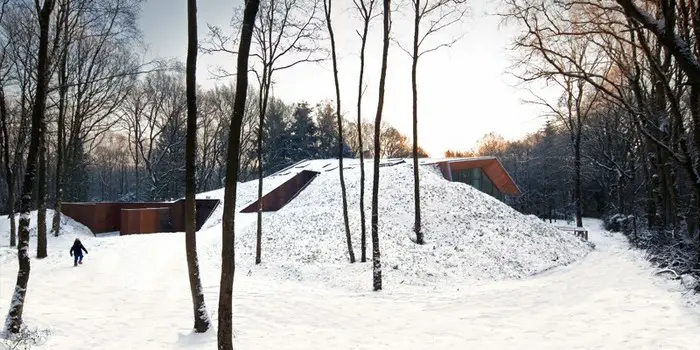
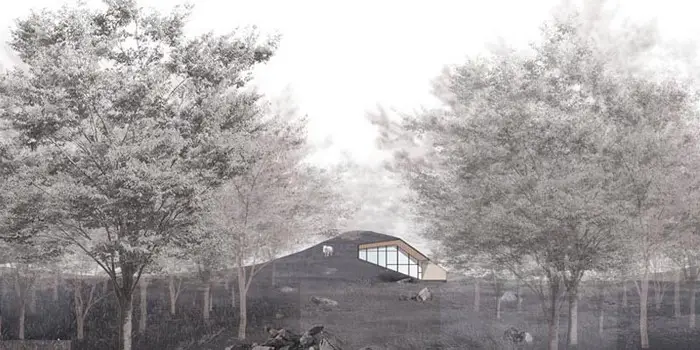

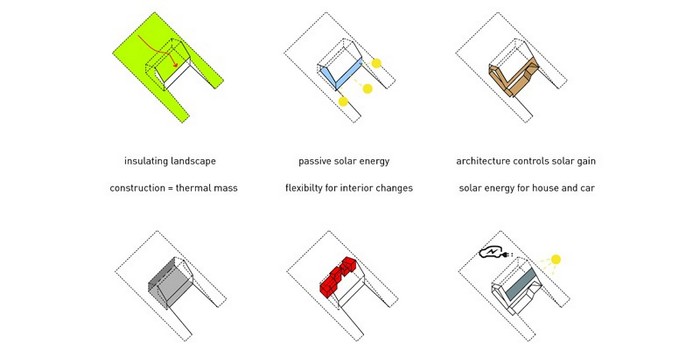
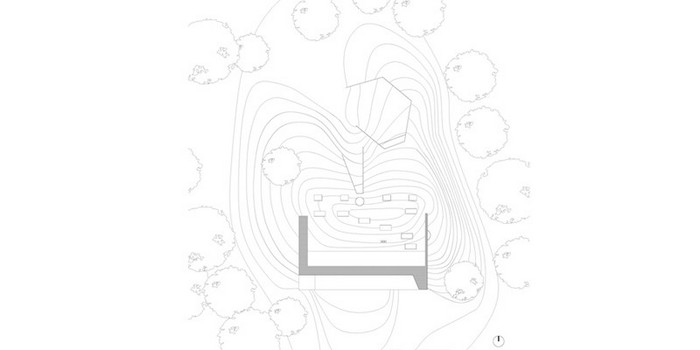
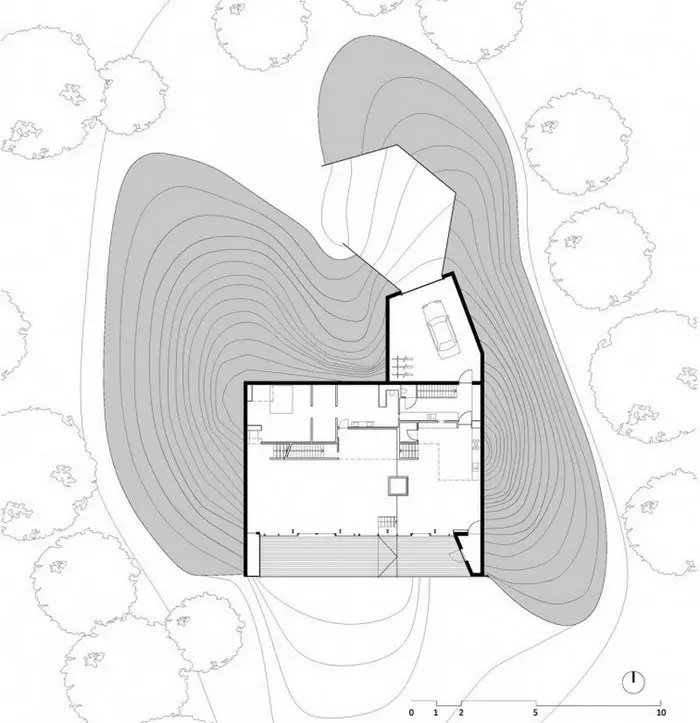
Another home that uses the earth to shelter it is Aloni in the Greek Islands…

